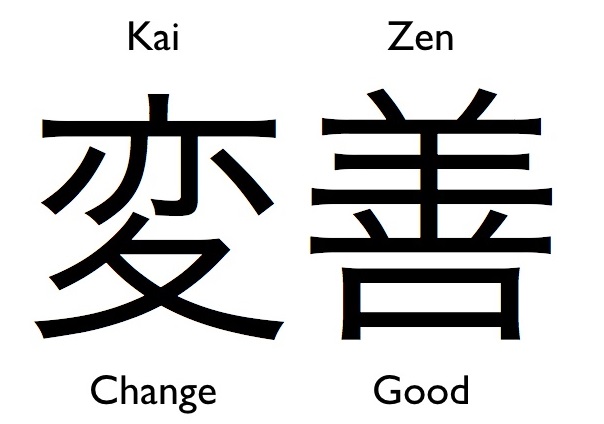From their best seller Improving Performance: How to Manage the White Space on the Organization Chart, Rummler-Brache Process Improvement Methodology draws inspiration from Gilbert’s Behavioral Engineering Model and its understanding of the interdependency of performance and the environment. According to Rummler-Brache Process Improvement Methodology: Addresses performance in a comprehensive, rather than “piecemeal” fashion. Focuses on the 9-variables that represent management’s performance improvement levers. Presents tools rather than mere theory or model of performance. Demystifies the connection between human performance and organizational performance. Provides a basis for optimism: the challenge can be met. The Rummler-Brache Process Improvement Methodology is comprised of three levels of performance; organizational, process and job/performer; and three performance dimensions; goals, design and management. This model forms nine variables in a structured manner, examining human performance in an organizational system. The Three Levels of Performance: Consists of monitoring performance at Job/Performer level, Process Level and Organizational level. These three levels are intricately depended on each other. Any Continue reading
Operations Management
The Deming Prize – Philosophy, Assessment Criteria, and Benefits
The Deming Prize, named after Dr. W. Edwards Deming, was established in 1951. To reconstruct Japan’s economy after WWII, the Japanese government encouraged the formation of industrial organizations. This initiative resulted in the formation of the Union of Japanese Scientists and Engineers (JUSE). JUSE gathered experts and executives from Japan’s key sectors to achieve this goal by exchanging best practices for quality improvement. Dr. Deming was named an expert by JUSE to educate and coach executives, engineers, and academics in the industrial sector on quality control following his commissioning by the United States Army to help with Japan’s postwar enumeration. His strategies were extensively adopted, culminating in greater production, enhanced quality, and cost savings. As a result of the worldwide awareness of the excellent quality attributed to Japanese goods, demand increased. Deming’s Philosophy The award recognizes achievement in comprehensive quality management and is given to people or organizations who effectively Continue reading
Work Study – Meaning, Importance and Procedure
Work Study forms the basis for work system design. The purpose of work design is to identify the most effective means of achieving necessary functions. Work study aims at improving the existing and proposed ways of doing work and establishing standard times for work performance. Work design involves job design, work measurement and the establishment of time standards and worker compensation. Work Study is encompassed by two techniques -method study and work measurement (time study): Method study is the systematic recording and critical examination of existing and proposed ways of doing work, as a means of developing and applying easier and methods and reducing costs. The main purpose of method study is to eliminate the unnecessary operations and to achieve the best method of performing the operation. Method study is also called methods engineering or work design. Method engineering is used to describe collection of analysis techniques which focus on improving Continue reading
Kaizen Vs Six Sigma: What’s the Difference?
The significance of a positive change is intrinsically characteristic of any culture. However, when viewed through the lens of a specific set of traditions, philosophies and the world picture, the phenomenon shapes, gaining new shades of meaning and incorporating more wisdom. Although kaizen, which is the Japanese interpretation of the continuous improvement concept, originates from a culture strikingly different from the Western one, in general, and the American one, in particular, it rubs shoulders with the Six Sigma concept as the foundation for an unceasing change toward the changing concept of perfection. The concept of improvement, which both Six Sigma and kaizen are meant to be geared toward, evidently is the characteristic that brings the two notions together. Diving deep into the Japanese philosophy of kaizen, one must mention that it implies little changes done reliably over a drawn out stretch of time. In other words, the focus on the Continue reading
Kaizen – Definition, Meaning, Process, Implementation, Advantages and Disadvantages
What is Kaizen? Japan’s management philosophy has introduced a new creative strategy for competitive success in business, or the so-called “Kaizen” model. The term Kaizen began to receive attention from management experts and scholars around the world when Masaaki Imai published his first book in 1986, “The Key to Japan’s Competitive Success”. Kaizen is a Japanese word with literally mean improvement, taken from words ‘Kai’, which means continuous and ‘zen’ which means improvement. Some translate ‘Kai’ to mean change and ‘zen’ to mean good, or for the better. In the context of Lean manufacturing, kaizen is understood to signify small, incremental, and frequent improvements to a process. Lean philosophy states that the large improvement which just require small amounts of investment and risk. The kaizen main mindset is making process improvements without adding people and space to the process. The more important one is implement the change without spending the Continue reading
Maximizing Productivity through Lean Thinking and Just-In-Time (JIT)
Companies aim to improve their productivity and increase their profitability. Consequently, many firms adopt effective strategies and business models that enhance their operations. Lean Thinking and Just-In-Time (JIT) models help maximize their efficiency and viability. Lean thinking involves a transformational framework that organizes human activities to deliver value to human beings while eliminating waste. Meanwhile, JIT is an inventory model that allows goods to be received from suppliers only as they are needed. The rationale for companies adopting JIT is to reduce inventory holding costs and increase inventory turnovers. Therefore, Lean thinking and JIT are significant among businesses since they help reduce costs and promote business productivity. The lean thinking framework has been adopted by many companies and has proved successful in various industrial dimensions. James Womack and Daniels Jones first used the term. The concept integrates five principles that contribute to its success: value, value stream, flow, pull, and Continue reading

